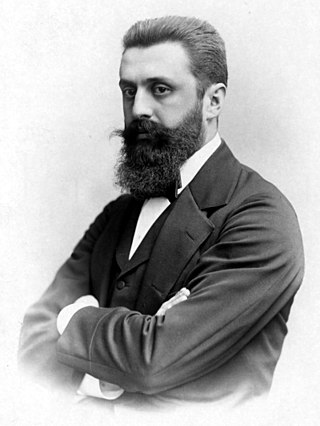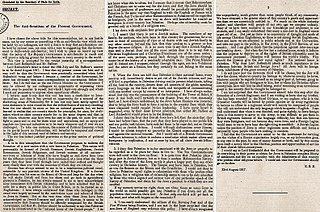History
Key books detailing the history include Jews Among the Indians: Tales of Adventure and Conflict in the Old West by M.L. Marks, Members of the Tribe: Native America in the Jewish Imagination by Rachel Rubinstein, The Jews’ Indian: Colonialism, Pluralism, and Belonging in America by David S. Koffman. [4]
In 1683, William Penn described the physical appearance of Native Americans by saying that they have similar eyes to Jewish people, writing that "Their Eye is little and black, not unlike a straighy-look't Jew." [5]
Jewish settlement in North America

According to University of Toronto professor David S. Koffman, writer of The Jews' Indian, American Jewish history is "part of the process of colonialism" and the emigration of European, North African, and Middle Eastern Jews to newly founded settler-colonial states such as the United States is "the story of modern Jewish life". Koffman claims that European Jews have been both victims of colonialism in Europe and perpetrators of colonialism in North America. [6]
The United States Constitution of 1789 and the Naturalization Act of 1790 do not mention Jews. European Jews, like other Europeans, were classified as "free white citizens" under the law. Under law, white Jews were understood to be different from white Christians primarily due to religious belief and religious practice. [7]
In 1822, the Moroccan-born Sephardic Jewish businessman and social reformer Moses Elias Levy established a Jewish settlement called Pilgrimage Plantation near what is now Micanopy, Florida. The intent of the settlement was to provide a safe haven for Jewish refugees from Europe. The settlement was damaged by fire in December 1835 by the Seminole during the Second Seminole War. [8] The Seminole burned a sugar house on the plantation and its contents. The plantation was then abandoned and some of the property was moved to another location, which the Seminole threatened to destroy, so the property was destroyed to prevent the Seminole from claiming it. Levy later filed a claim with the government for its value, but the government decided against compensating him. [9]
A small number of Jews, mostly from Germany, participated in the settlement of the American frontier. The 2022 documentary "Jews of the Wild West", chronicles the history of Jewish pioneers and was made in consultation with Jewish and Native advisors to ensure historical accuracy and sensitivity. [10]
The Prussian-born Jewish trader Solomon Bibo, who became a colonial governor of the Acoma Pueblo, married the Acoma Pueblo woman Juana Valle and she converted to Judaism. Descendants of Solomon and Juana live in New Mexico. [11]
Jewish-Native solidarity
As early as the 1890s, some American Jews were active in supporting the rights and equal status of Native Americans. However, instances were few and isolated. During the New Deal era, Jewish support for Native American rights became more organized and visible. Jewish civil servants, lawyers, educators, social scientists, and anthropologists advocated for Native Americans, including a handful of influential Jewish legal scholars who helped shape the Indian New Deal. In 1973, when citizens of the Oglala Sioux Tribe were jailed following the Wounded Knee Occupation, the majority of the lawyers representing the Oglala prisoners were Jewish. [12] During the Dakota Access Pipeline protests in 2016, nine rabbis, rabbinical students and Jewish community members were arrested as an act of civil disobedience during a rally put on by Jewish Voice for Peace in Philadelphia. [13] Rabbi Alissa Wise, Jewish Voice for Peace deputy director, who was arrested during the protests, said, "As Jews who have experienced displacement in our own histories and who are dedicated to justice for the Palestinian people who have been displaced and erased due to the policies of the Israeli state, it is important for us to be here today to honor indigenous sovereignty, and to confront what it means to live on stolen land". [13]
The Coushatta Tribe of Louisiana maintains close ties with the State of Israel and celebrates Israel's Independence Day. The Coushatta Tribe has stated a sense of solidarity with Jews due to similar histories of prejudice, discrimination, ethnic cleansing, and persecution. [12]
Kevin Gover (Pawnee Nation), the director of the National Museum of the American Indian, has discussed the relationship between Native Americans and Americans Jews. Gover has mentioned witnessing antisemitism while growing up in Oklahoma and notes "shared goals and challenges" face by Jewish and Indigenous communities. Gover believes that "what happened to Indians very closely resembles Jews in Europe during World War II. Everything from systematic killing—the hunting of them and their murder—to the use of propaganda to fire up the public to engage in that sort of conduct" and therefore studying the Holocaust is important to understanding Indigenous genocide. Gover has also noted that many of the lawyers representing Native American tribes between the 1930s and 1950 were Jewish Americans at a time "when it wasn't a popular thing to do". However, Gover has also recommended caution in conflating the Holocaust with the Native American experience, claiming that Native American genocide was not "mechanized, systematic killing" in the same way as the Holocaust and that the "greatest killer of Indians" was depopulation due to disease. [14]






